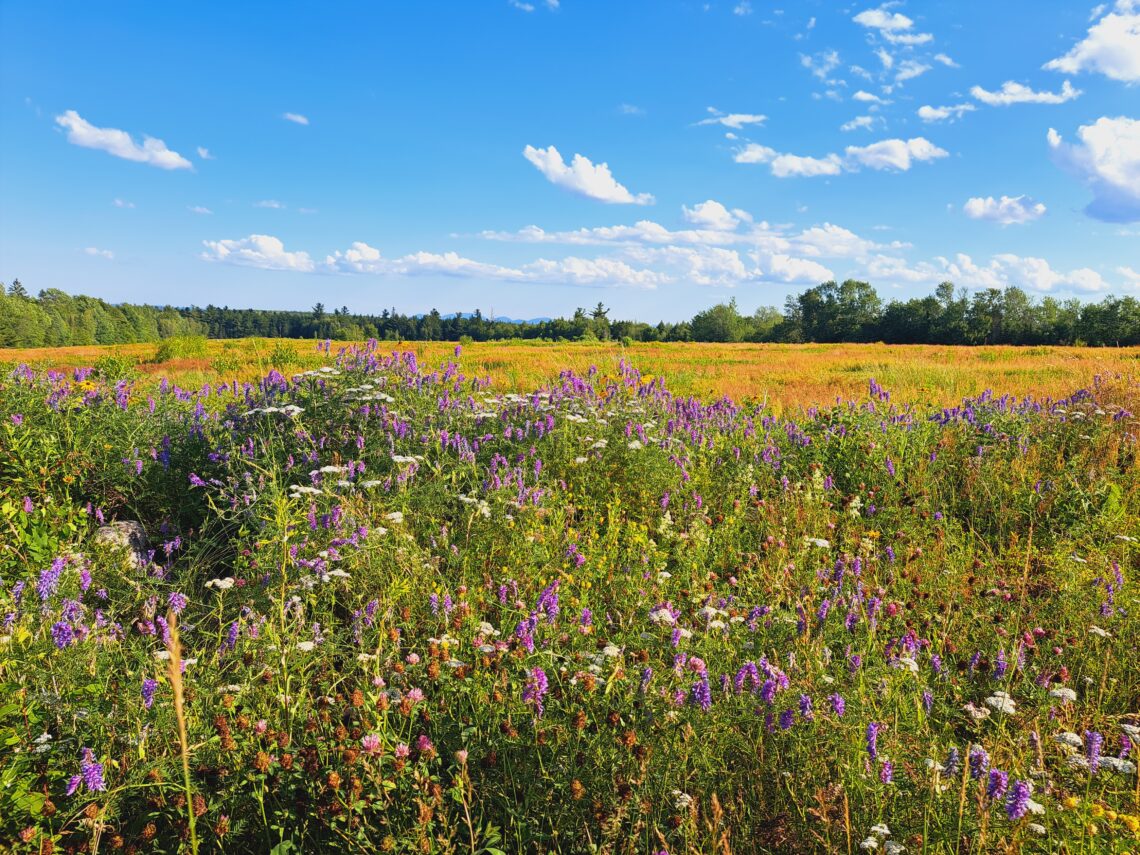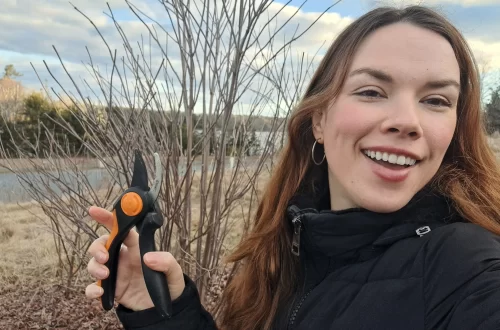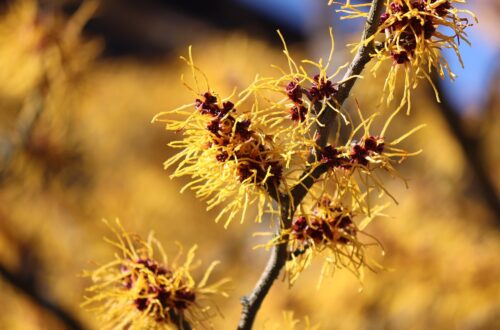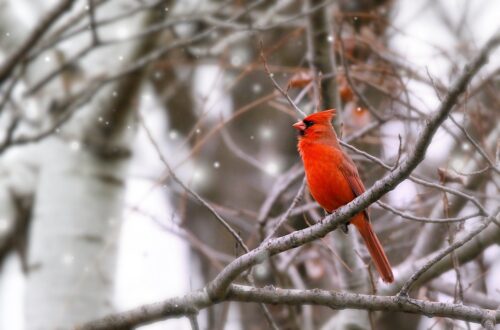Planting wildflower seeds in fall allows seeds to cold stratify in winter and boosts germination rates!
Fall sowing flower seeds can give you a head start on the growing season to come, but it also allows native plant seeds to naturally cold stratify and increases spring germination rates. Whether you plan to grow just a few perennial wildflowers in your garden beds or you dream of converting your lawn to a wildflower meadow, you’re in the right spot. In this guide, you’ll discover two different techniques for sowing seeds in fall, plus a list of cold tolerant perennial wildflower seeds that grow best with fall sowing!
Affiliate disclosure: As an Amazon Associate, I may earn commissions from qualifying purchases.
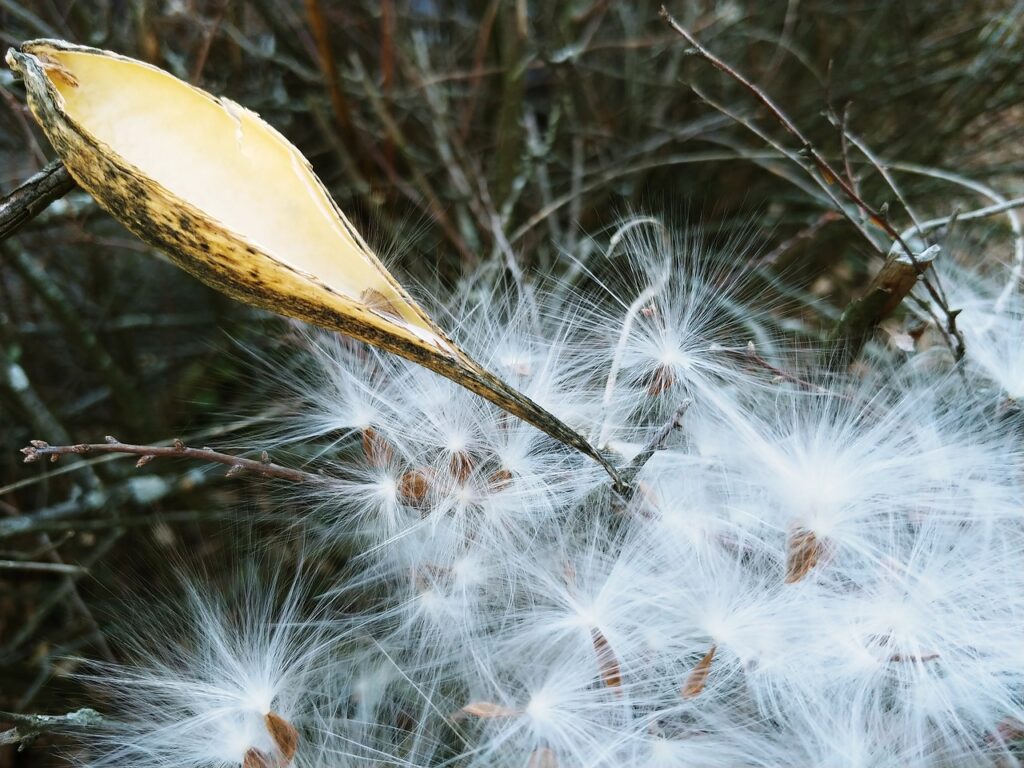
When to Plant Wild Flower Seeds in Autumn
Gardeners in warm climates can plant wildflower and native plant seeds in spring, fall, or winter. But if you live in a cold area, it’s best to plant native seeds in late fall, after the ground freezes. Seeds that are native to cold areas germinate best when they’re subjected to cold and moist conditions in winter, but planting after the ground freezes also reduces the chances that your seeds will be lost to rot or pests.
Just keep in mind that you may need to do a bit of prep work earlier in the season before fall planting flower seeds. Although native plants grow in relatively poor soil, they will germinate better if you remove weeds and amend the soil with a bit of compost before the ground freezes!
Tip: If you miss your fall planting window, don’t fret! You can still plant wildflower seeds in winter in milk jug greenhouses or with cold stratification in spring.
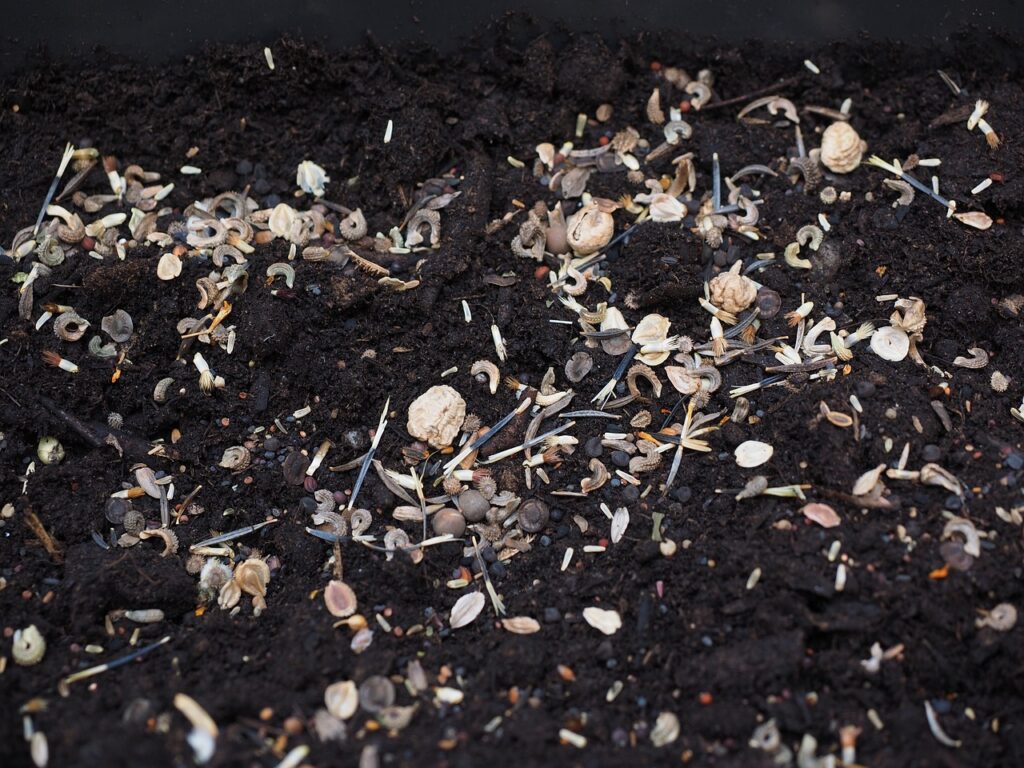
Fall Planting Wildflowers: Two Methods to Try!
Depending on the size of your garden and your gardening goals, you can plant just a few native plant seeds in your flower beds in fall, or you can plant a larger strip of seeds in your lawn to make a mini wildflower meadow. If you just want to plant a few seeds, you can pick up your seeds online or harvest your own native plant seeds in fall. However, if you want to grow a larger quantity of seeds, there are a few companies that offer wildflower seed mix blends in bulk for specific growing regions!
Method 1: Planting Wildflowers in a Flower Bed
If you’re interested in planting wildflowers in your garden bed, prep your soil before the ground freezes by raking away autumn leaves and pulling up weeds. You can also layer 1 to 2 inches of compost over the planting area and mix the compost into the top 6 inches of soil if you want to give your seeds a boost.
Once the ground freezes, sprinkle your wildflower seeds over the area where you’d like your plants to grow and then walk on the seeds or gently press them into the soil with your hands. Water the seeds just once to settle them in and scatter a light dusting of weed-free straw or chopped autumn leaves over the area to protect the seeds from the elements. Keep in mind that wildflowers generally need light to germinate, so go light with the mulch!
During the winter, your seeds will cold stratify in your garden and they should sprout in spring. You’ll only need to worry about watering again when you see that green spring growth!
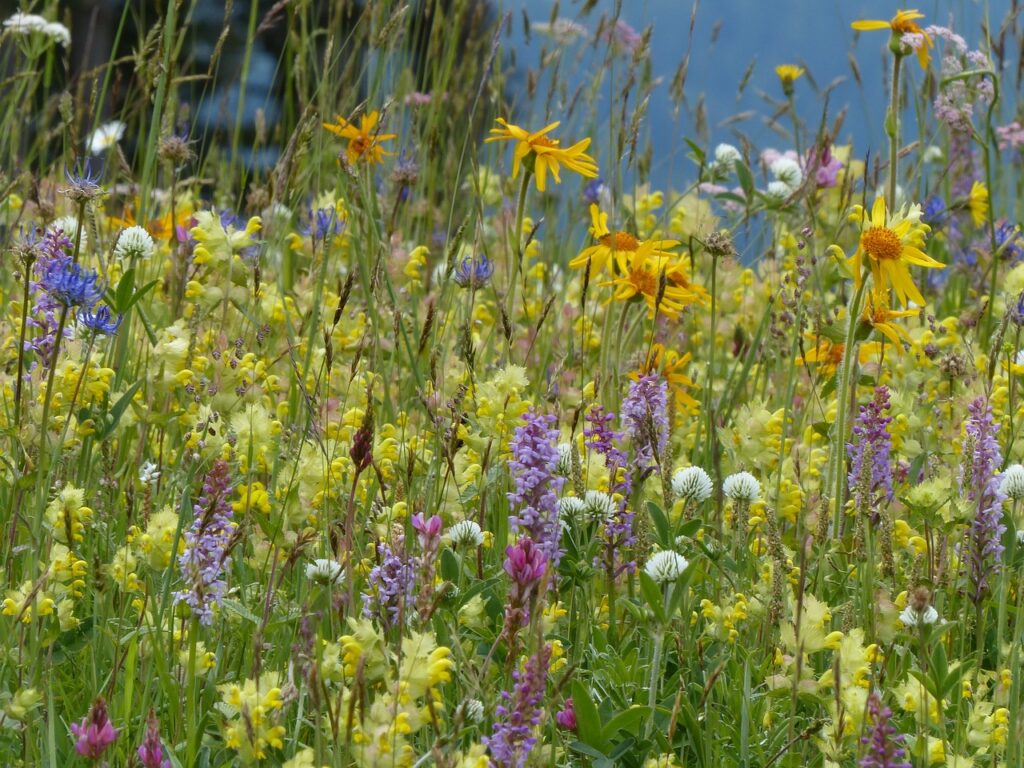
Method 2: Planting a Wildflower Meadow or Lawn Conversion
Converting part or all of your lawn into a wildflower meadow uses a very similar planting technique as above, but on a larger scale!
First, prep your planting area before the ground freezes by pulling up weeds, raking away leaves, and amending your soil with compost if needed. If there are lots of weeds or grass in the area, you can remove these unwanted plants by installing tarps or sheets of cardboard (secured with rocks or landscape staples) over the area for a month or two before you intend to plant.
When the ground freezes, spread your seeds by hand or with a broadcast spreader. Wildflower seeds are lightweight and often hard to see, so many growers mix 1 part seeds with 8 parts dry sand before applying them.
Spread the seeds over your planting area by moving first in a north-to-south direction. Then, circle back and cover the entire area again while moving in an east-to-west direction. This will ensure you cover all of the soil and will leave you with a checkerboard-like spread of seeds when you’re done.
After planting the seeds, walk over the area or use a landscape roller to press the seeds into the soil. Water the seeds just once after planting and then sprinkle a light dusting of weed-free straw or chopped autumn leaves on top. You’ll only need to water the seeds again when they sprout in spring!
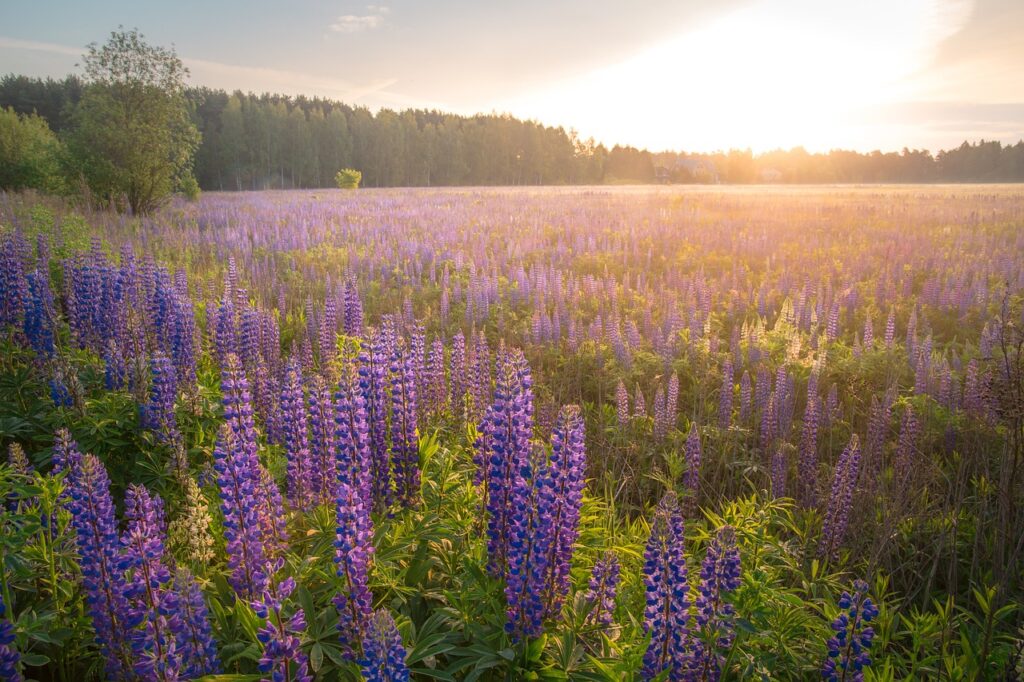
7 Tips for Growing Wildflowers
Wildflowers and native plants are relatively low maintenance and they don’t need much attention after they’re planted. However, if you want your native plants to grow as well as possible, here are a few care guidelines to remember:
- Lighting. Some native plants grow well in shade, while others need full sun to thrive. Make sure to choose native plants and wildflowers that are well-suited for the lighting in your garden!
- Watering. Most native plants are drought resistant and they don’t need much water once they’re established. That said, young plants and seedlings should be watered regularly to help them settle in and water-loving natives, like cardinal flower, may need supplemental water if you grow them in a dry garden.
- Fertilizer. Native plants generally don’t need much fertilizer and they can actually develop weak and floppy stems if they receive too much of it. If you want to perk up your plants, an annual application of compost should do the trick.
- Weed control. Wildflower meadows should be mowed once a year to keep saplings and brambles from taking over. This can be done either in spring or fall, although I recommend fall mowing as animals are less likely to be nesting in autumn.
- Selection. Make sure to select plants that are appropriate for the growing conditions in your garden. Choosing plants with different flower shapes, colors, and bloom times will give your garden a more colorful and complex look (and attract more pollinators!)
- Division. Some perennials need to be divided every 3 to 5 years to keep them in tiptop shape. If your plants are looking bald in the centers or they’ve stopped blooming, try dividing them!
- Patience. Growing wildflowers from seed is a rewarding process and it can save you money too. Just remember that some wildflowers may not bloom until they’re 2 to 3 years old.
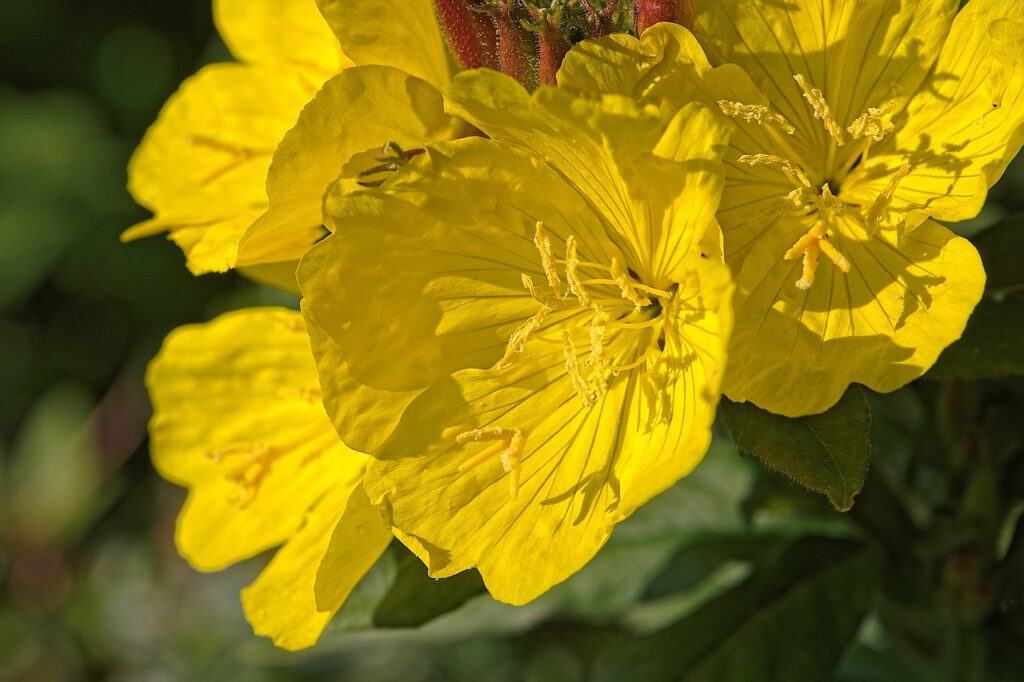
Best Wildflower Seeds for Fall Planting
Any native plant seed that requires cold stratification is a good candidate for fall sowing. Some of the most popular flowers that you may want to plant in fall include:
- Most milkweeds, including common and swamp milkweed
- Most coneflowers
- Ironweed
- Lupine
- Arnica
- St. John’s wort
- Black cohosh
- Joe Pye weed
- Perennial sunflowers
- Catmint
- Bee balm
- Black-eyed Susan
- Goldenrod
- Shooting star
- Penstemon
- Anise hyssop
- Evening primrose
- Skullcap
- Yarrow
- Bloodroot
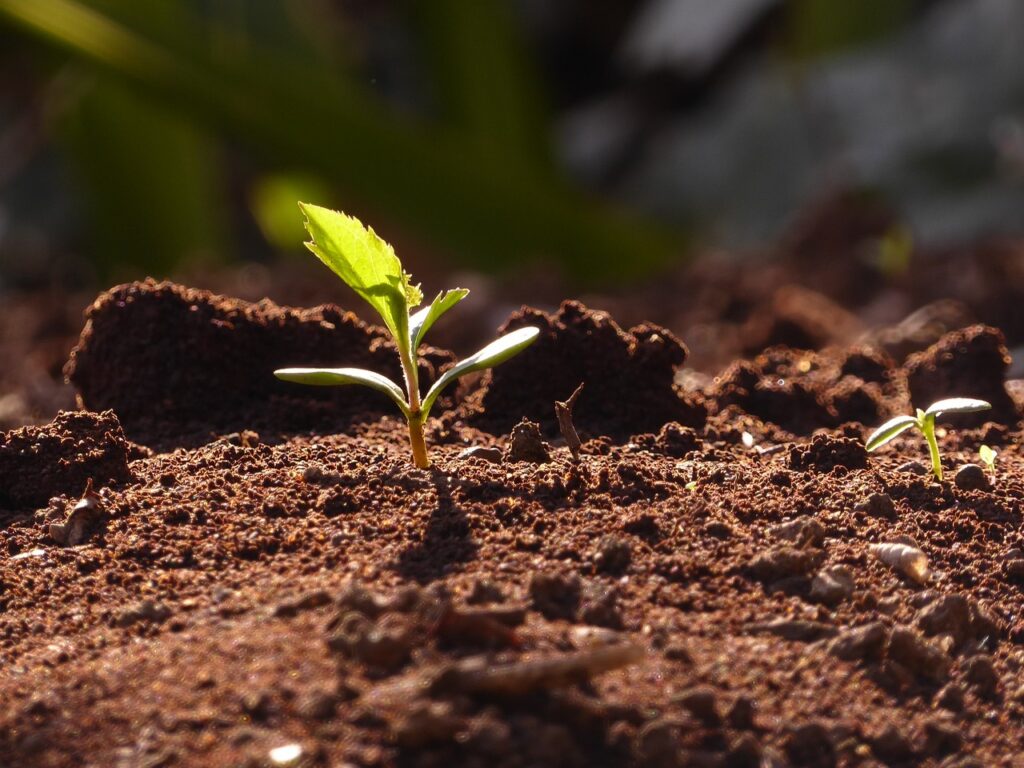
Frequently Asked Questions About Sowing Wildflower Seeds in Fall
What should I plant in fall?
Native plants and wildflowers that need cold stratification are ideal for fall planting. You can also plant spring flowering bulbs and garlic in fall!
Can you plant coneflower seeds in the fall?
Yes! Most coneflower varieties germinate better if they’re planted in fall and allowed to cold stratify through winter.
Can I just throw wildflower seeds on the ground?
Yes, you can throw wildflower seeds on the ground and some of them should sprout. However, you will get better germination results if you prep the soil ahead of time by removing weeds and adding a bit of compost.
